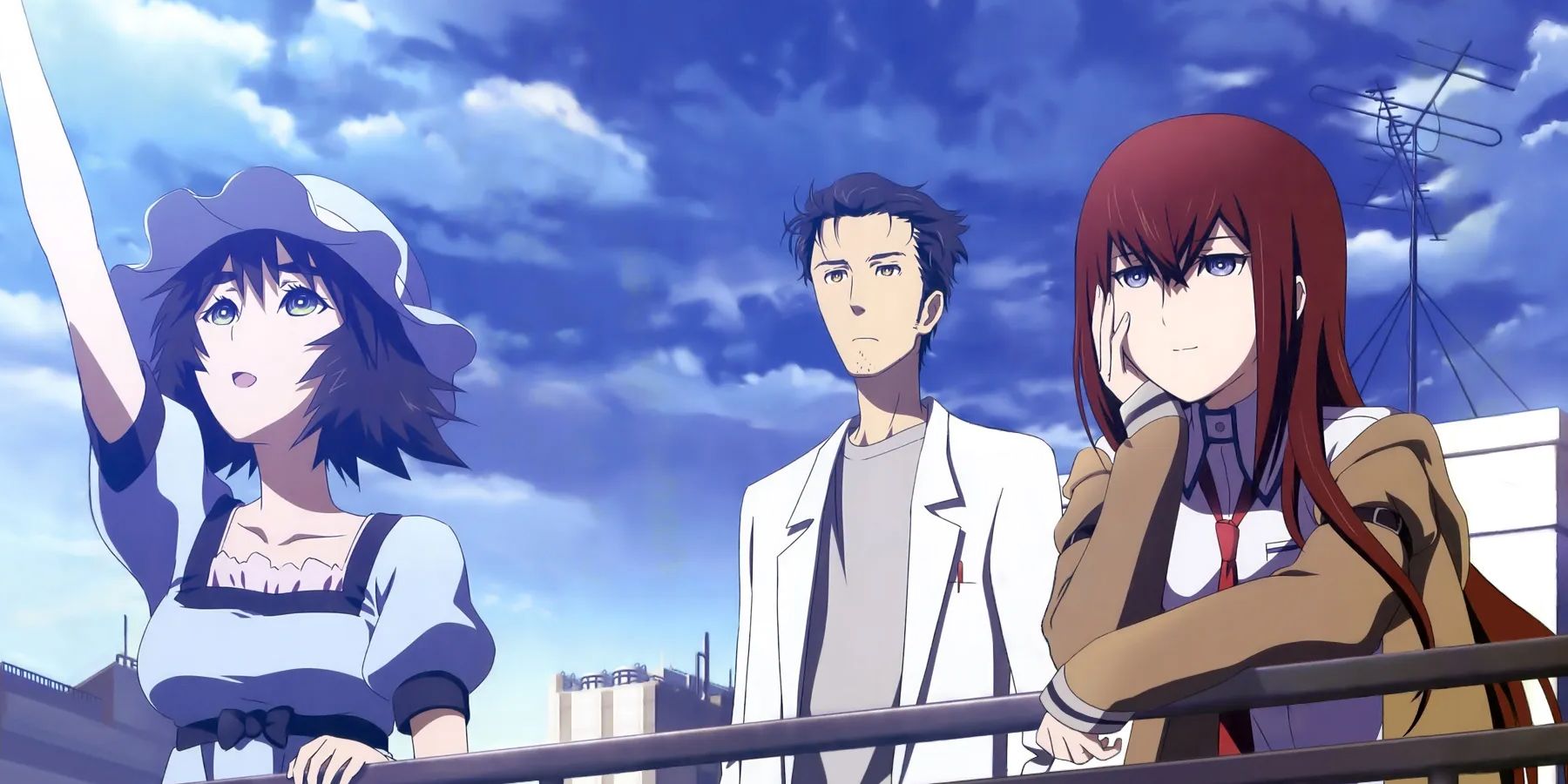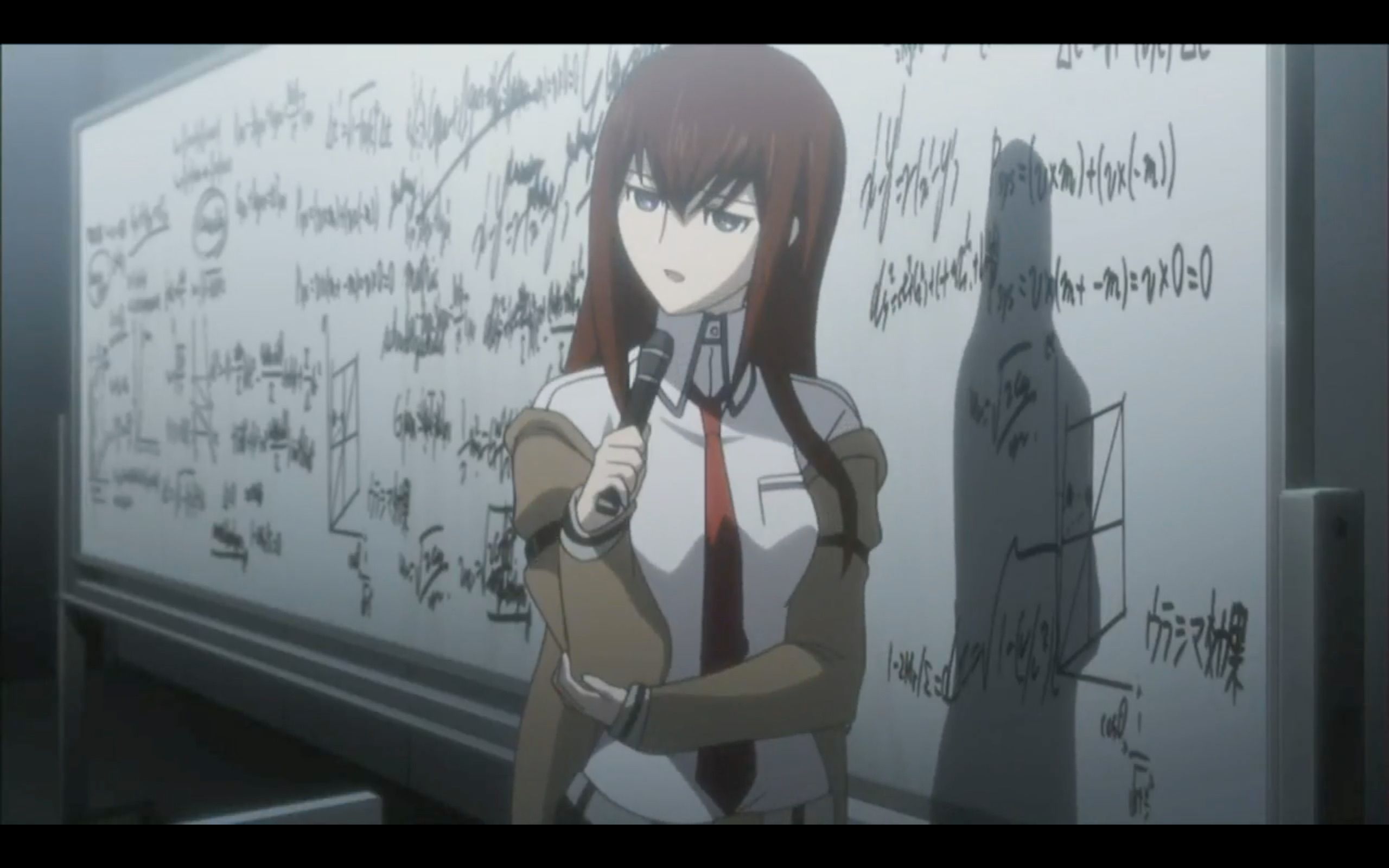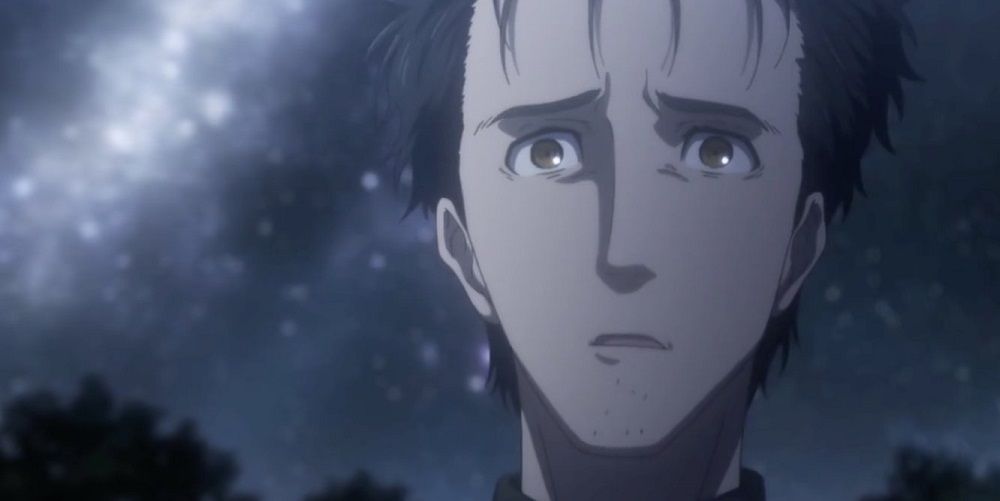This article contains spoilers for the Steins; Gate anime and the visual novel. Steins; Gate is one of the most acclaimed animes of the 2010s for a number of reasons. A great character development, cliffhangers at every turn, a compelling story and a unique protagonist, the 2011 adaption from the visual novel became a classic almost immediately. Nowadays, the anime is even more known than the original game in perhaps one of the most successful adaptions, if not the most, when a videogame is the original source. But if there is something that sets Steins;Gate apart it's the attention to detail when building a story based on time travel.
Set in Akihabara, Tokyo, the show follows around Rintaro Okabe, a picturesque character that keeps calling himself a "mad scientist". With his friends Mayuri Shiina and Daru Hashida, he founded the Future Gadget Laboratory in which they pursue a great invention that will change their lives forever. And that's exactly what happened when Rintaro was attending a time-travel conference. After one of the lectures he found the dead body of Kurisu Makise, a famous scientist, while wandering through aisles of the building. He then sent a message to Daru, but accidentally, the message was sent to the past with his cell phone-operated microwave oven. That alone reversed Kurisu's death and gave birth to the D-mails, messages to the past that have the power to change the present, but with only Rintaro remembering the timeline before the message was sent.
Time-Travel in Steins; Gate Compared to Other Anime
The use and explanation of this D-mails might seem dubious at first, but in every episode they will go into deeper details and even giving a general explanation in current accepted time-travel theories. As Kurisu states, there are 11 theories that have settled in the scientific community (they talk about all of them in the game), but from those eleven, Steins;Gate focuses on the Black Hole theory, specifically, traveling through a Kerr-Black Hole.
The mentioned microwave oven can create a miniature Kerr-Black Hole and send data through it effectively going to the past, and with that, changing to a world-line in which a certain event occurs differently. The show itself tries to explain how this theory works multiple times, usually with Kurisu as the teacher. Also, they take into consideration other well-known theories for the consequences of time-travel like the Butterfly Effect theory or the Many-Worlds Interpretation theory. No other anime has tried this hard to have a proven background on how exactly the time-travel, one key component of the plot, works.
To put in perspective, time-travel is a common tool in anime, but it's rarely clarified, as most of the time the occurrence of leaping through time is taken for granted. That is the case in Erased and Tokyo Revengers where they simply never say clearly how their protagonist can do it. Both are pretty similar in how they occupy their younger-self body in order to change an event related to them in the past, and to do so, they have certain rules to follow. However, they lack a basis or detailed idea on how this can possibly happen as this "power" seems like a natural ability or something incomprehensible.
In Steins; Gate, the Reading Steiner would be this natural ability only possessed by the main character. This ability allows him to remember every world-line he has been a part of, meanwhile everybody else is only aware of the word-line they are in at the moment. Nonetheless, in the end they also explain it and show that everybody has it, with the difference that for the rest it might seem as vague dreams. That's because Rintaro is the only one doing the actual jumps, he is not changing the past, instead he is making himself jump between world-lines.
Another similar example to Erased and Tokyo Revengers would be Your Name, the beloved film by Makoto Shinkai. Once again, the two main characters find themselves traveling to a different time, one to the future and one to the past, while they also exchange their bodies temporarily. Some mentions to a ritual in Mitsuha's family and the meteorite incident is all the information that was given about how they were suddenly time-traveling. These examples bring up a trend, more often than not, stories that include time-travel have a number of holes or missing pieces that the spectator is expected to ignore, because at the end of the day, it's something far from reality and attached to our imagination. Yet, with how far time-travel theories have gone and how important meddling with time and space is for the collective worldview, a show closer to reality should be a possibility, that was the mindset for creating Steins; Gate.
What Makes It Special
The idea to write a story using real theories on the matter might feel overwhelming at first, and it certainly did in the visual novel. When the player is thrown a huge amount of information about time-travel theories and basic physics knowledge in black holes, wormholes, and so on, it can be difficult to process. The adaption, on the other hand, did a great job digesting and displaying it with a much better tempo. But what truly makes it work is Rintaro's attitude and how he changes from just trying to help his friends with their to wishes to trying to fix all the consequences, upon threat of death or imprisonment. All while taking into consideration extended theories on the possible outcomes of time travel.
They don't throw all that information regardless of what it does the story, they write the whole story about it in a way they can still use more typical character development and relationships. What starts being a shockingly detailed sci-fi ends up being a romantic comedy, a thriller and the old tale of friendship and working together, everything at the same time. Furthermore, incorporating real life topics to their world, like the mention of John Titor or the evil SERN, clearly based on CERN, creates a more relatable environment, different from traditional science fiction or even some animes.
Although, to be fair, the Future Gadget No. 8, the PhoneWave (Name subject to change), the one used for the D-mails, is much more grounded or realistic (if that word applies in this case) than the Time Leap Machine or the actual time machine, both of them seemingly impossible and closer to the science-fiction narrative. Still, the same rules are valid and apply to them, and by the point they are presented the image of the show has completely changed and turned into that mixed of genres that makes it so unique. A time loop paradox at the end completes an idyllic use of time-travel as a narrative tool and gives a closure some consider fan pandering. Regardless of that, Steins;Gate puts the study of time at center of the plot, instead of using time-travel as a mere utensil to move from one thing to another, they wrote a story for it, and a superb one, and that's what sets it apart from other similar shows or films.



